Whether you’re jigging for bass at your local pond, trolling for stripers at the local reservoir or battling giant marlin miles from the shore, you can have fun fishing in a number of different ways. After all, most types of fishing are pretty fun, and they represent a great way to spend the day.
But as far as many anglers are concerned, there’s nothing quite like fishing from the beach, while feeling the sand between your toes and listening to the soundtrack provided by the gulls and crashing waves. And because you never know what you may catch, surf fishing is not only healthy and relaxing, but exciting too.
But to surf fish effectively, you’ll need to learn the basics. We’ll try to help you do exactly that below, by explaining the gear you’ll need and the techniques you’ll employ.
Surf Fishing Gear and Tackle: Tools of the Trade
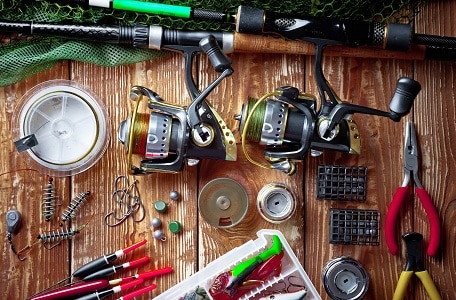
However, you’re unlikely to have a lot of success doing so (and your reel will likely start to have issues if it is not rated for saltwater use). Instead, you’ll want to obtain a rod, reel and tackle kit that is specifically designed for fishing in the surf zone. We’ll discuss each of these types of things below:
Surf Rod

Because rod length is one of the key factors that determines how far you’ll be able to cast, and you’ll want to be able to cast your lure out 100 to 200 yards to get it beyond the crashing waves, most best surf rods are relatively long. Unlike the 6- to 8-foot-long rods used by most anglers fishing from boats or in freshwater, surf rods are usually between 9 and 15 feet in length.
It can take a bit of practice to learn how to wield such a long rod effectively, so beginners are usually best served by selecting a rod in the 10- to 12-foot-long range at the outset. Select a rod with a medium-heavy power and a medium action, which will work well in most circumstances.
Surf Reel, Main Line and Leaders
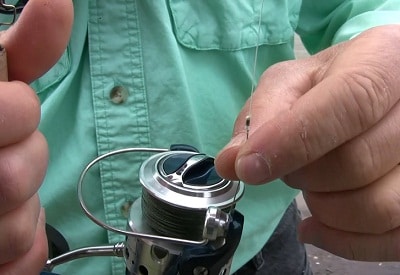
You’ll want to load up your reel with a high-quality fishing line, which will work well in the surf. Most surf fishers use regular monofilament for their main line, but you can use fluorocarbon if you don’t mind the higher price. Typically, you’ll want to use 20- to 25-pound-test line, which is strong enough for most fish you’ll catch.
You’ll also need to use a shock leader when fishing from the shore. A shock leader is used to help absorb the stress that heavy weights and long casts can place on the line. Shock leaders are typically made from low-stretch monofilament, and they are available in a wide variety of diameters.
Additionally, depending on the type rig you use, you may need a few other leaders. You’ll usually need one that stretches between the end of the shock leader and the hook or sinker, and you may also need one that branches off the main line via a three-way swivel and ties to a hook or sinker. Fluorocarbon is typically the best choice for these types of leaders, but monofilament will also work.
Tackle and Rigs
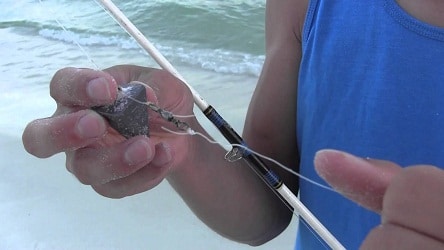
There are an infinite number of surf fishing sinker rigs you can use, but you can rig up a basic version by following the steps below:
- Tie a length of shock leader onto your main line. The shock leader can be tied directly to the main line with an Albright special knot or you can tie it to a two-way barrel swivel with a Uni knot.
- Thread a 4- to 8-ounce pyramid sinker onto the end of the shock leader, and then tie the terminal end of the shock leader to a barrel swivel with another Uni knot.
- Tie your fluorocarbon leader to the other side of the barrel swivel with another Uni knot and tie your hook on to the opposite end of the leader with an improved clinch knot, Trilene knot or Palomar knot.
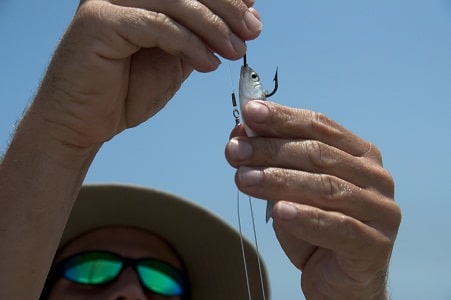
Your choice of bait will vary depending on your location and target species. Cut squid or mullet are popular choices, as are whole shrimp, sand fleas (which you can dig up from the beach), clams or bloodworms. Anglers fishing for big fish or sharks may even use whole mullets or stingrays.
When you are getting started, you’ll be best served by selecting a good all-around bait like cut squid or mullet. These will both produce bites along most shorelines, and they’re attractive to a variety of gamefish.
You can also use lures to fish from the shore, but they’re not as easy to use as cut or live bait is. Spoons are among the most effective lures to use, but there are also a number of crankbaits, plugs and jigs that are also effective.
Tools
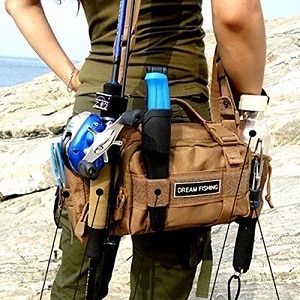
- A pair of needle-nosed pliers with built-in cutting blades for removing hooks, cutting lines and similar tasks.
- A knife for cutting lines, cleaning fish and cutting bait.
- A sand spike (a 3-foot-long piece of PVC with a sharpened end that you stick in the sand) to hold your rod while waiting for a bite.
- A cooler to keep your catch cold until you are done fishing.
- A surf cart to help you haul your gear down to the water (optional).
You’ll also want to make sure you bring all of the necessary clothing you’ll need (including a hat to protect you from the sun and a pair of flip-flops or other beach-appropriate shoes). A good pair of polarized sunglasses are also helpful and be sure to bring plenty of sunscreen – even on overcast days.
Basic Surf Fishing Techniques
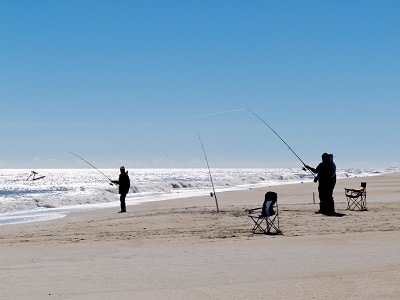
You’ll learn the ins and outs of location selection with practice (you’ll need to learn to “read” the surf), but to start, you can just cheat by looking where the other shore fishers are working. Be sure that you don’t crowd them – just head to the same general area, while still leaving 50 to 100 yards between you and the closest anglers.
At this point, you’re ready to cast. Don’t try to haul off and launch the rig to the horizon, just execute a nice, easy cast that gets your rig beyond the bulk of the crashing waves. Your casting distance will come with time and practice. Once the rig is in the water and settles down into the sand, close the bail on your reel.
Now you must simply wait for a bite. You can hold the rod if you like, but because it’ll likely take a while to attract a fish, many anglers prefer to slide their rod down into a sand spike, to keep their hands free. In fact, serious surf fishers typically bring several rods along, which they’ll use simultaneously.
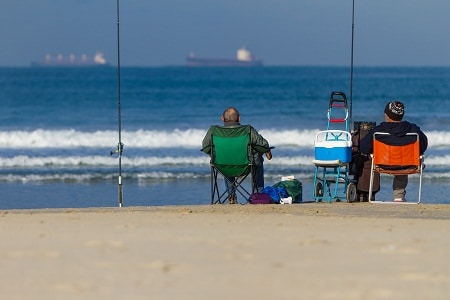
***
As you can see, surf fishing is a pretty straightforward activity, and you don’t need a whole lot of specialized equipment or knowledge to have a great time on the water. Just follow the tips above, talk to the locals (especially the ones that keep dragging fish out of the surf), and get out on the beach.

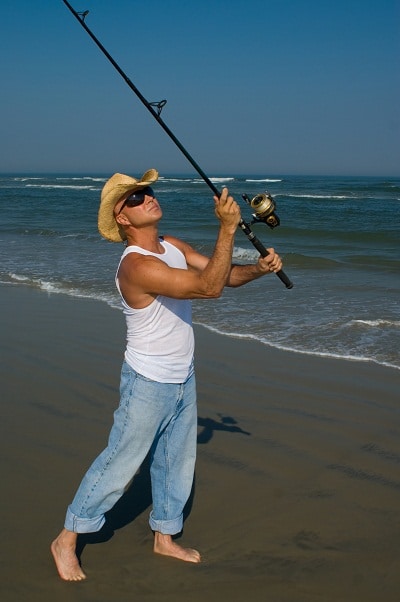
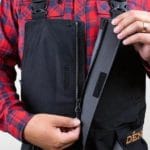
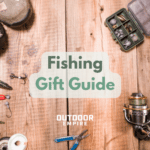
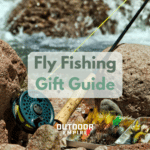

Comments are closed.